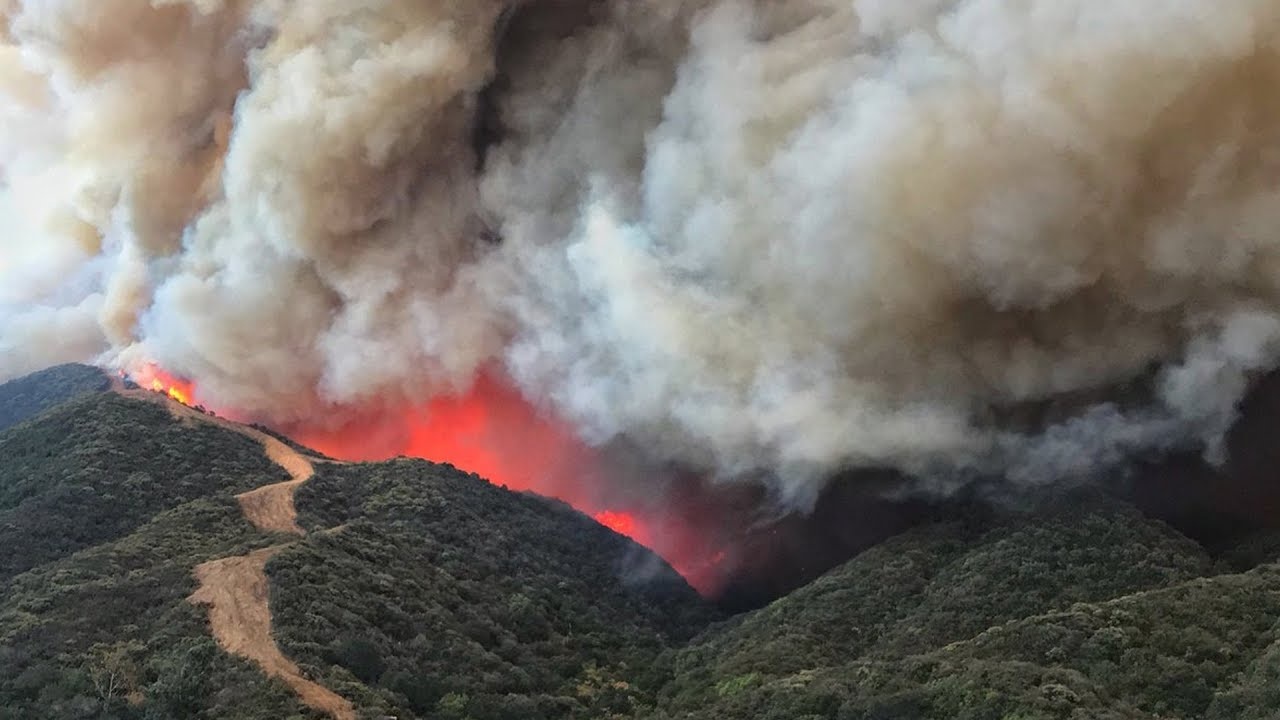
California Wildfires: Thomas Fire Could Become Largest in State History

More than 8,400 firefighters are battling the Thomas Fire raging in Southern California’s Pacific coast. The massive blaze, which charred 270,000 acres, destroyed 1,024 structures and took the life of 32-year-old Cal Fire engineer Cory Iverson, is officially the third largest wildfire in state history.
Notably, the Thomas Fire—now 45 percent contained—could potentially take the dubious title of California’s largest-ever wildfire since record-keeping began in 1932. The state’s largest is the 2003 Cedar Fire which burned 273,246 acres and killed 15 people.
Environmentalist and 350.org founder Bill McKibben tweeted about the stunning distinction:
The fire raging in the California hills is set become the largest in state history.
In December.
Which is impossible.
Hot New World. https://t.co/UQK8KUtUA6— Bill McKibben (@billmckibben) December 18, 2017
The multiple fires that erupted across Southern California over the past two weeks have been fueled by an unusual set of forces, including stronger-than-normal Santa Ana winds, experts says.
The fast-moving Thomas fire, which began on Dec. 4, is now approaching Santa Barbara, threatening more than 18,000 structures, forcing thousands of additional Californians to evacuate from their homes, and has cost $123.8 million so far to fight. One person has also been killed in a vehicle accident blamed on the Thomas Fire.
But hope appears to be on the horizon. According to CalFire, weak northeast winds are expected to cool temperatures and increase humidity, allowing for favorable firefighting efforts.
As Reuters reported, the calmer winds helped make Sunday one the most productive days battling the fires.
“We’re just hoping to make it home for Christmas,” Bakersfield Fire Department Captain Tim Ortiz told the news service.
The Golden State has been experiencing a higher frequency of intense wildfires in recent years. According to Cal Fire, five of the 20 most destructive fires in recorded history have ravaged the state in 2017.
The current outbreak comes not long after October’s string of devastating wildfires in Northern California that killed 44 people—the deadliest in state history.
While the link to climate change is not clear, scientists have tied California’s string of fires to rising temperatures and years of epic drought that dried tree canopies, grasses and brush that spark wildfires.

 233k
233k  41k
41k  Subscribe
Subscribe 